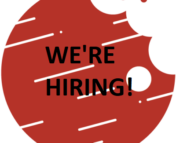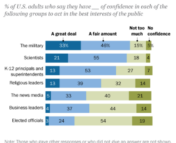When I was growing up, I didn’t really know that science and writing could be combined into one career. I thought I had to pick between the two fields, and for a long time, I ended up choosing science. I started graduate school, and then I started writing for Astrobites (FYI we’re hiring new writers, deadline Nov. 5th!). I rekindled my love for writing and started looking for more opportunities to tell stories about science.
The American Association for the Advancement of Science Mass Media Fellowship, or AAAS MMF, was one of those opportunities. It’s an experience that I can’t recommend enough. The program matches science students (mostly graduate students, but sometimes undergraduates) with local and national news outlets, where they spend a summer as journalists reporting groundbreaking discoveries and science that’s relevant in everyday scenarios. It’s a competitive, challenging, and ultimately incredibly rewarding fellowship. And now, the 2022 fellowship application is open through Jan. 2nd!
I was a fellow in summer 2021 at KUNC, a National Public Radio member station in Northern Colorado. This Astrobite is my way of sharing application tips, fellowship experiences, and lessons learned!
Building An Outstanding Application
To become a AAAS fellow, you’re going to need some kind of previous writing experience. This is my first piece of advice: write in whatever format you can, as much as you can! Astrobites is an incredible way to get started, whether you’re an undergraduate who has done some of your own research and wants to write a guest post, or a graduate student thinking about joining the collaboration.
From there, look for opportunities on campus or writing for other science media outlets. I found an internship at Wyoming Public Radio, where I wrote and voiced science stories part-time for a year. Many local news outlets will let you volunteer if you just ask! I’ve also heard of students writing for their university’s press office. Some science websites invite stories from early-career science writers.
Join the online science writing community, especially on Twitter. Follow science writers you enjoy reading or listening to (some of my favorites are Ed Yong, Katherine Wu, Maddie Sofia, and Alie Ward). Tweet out any articles that you write. And there are a ton of resources for new-ish science writers, like the NPR Scicommers community, The Open Notebook, and the National Association of Science Writers.
Actually Making Your Application
I spent a large chunk of time on my application, and you probably will too. It’s worth it, I promise. The application asks for at least two references, a CV, a minimum of two writing samples (one of which must be science-focused), and written answers to a handful of questions. AAAS gives out a lot of tips, but I’ll add some more to the list:
Take the written answers portion seriously. These are NOT responses that you should hammer out and send off. Spend time on them, but don’t make them too long. Emphasize your passion for science writing. I specifically tried not to repeat myself in any of my responses. I wrote creatively, using metaphors and imagery and anything I could think of to make my application stand out (I’m pretty sure I compared myself to the cookie-monster at one point…). Take any writing experiences you have had and use them to your advantage, laying out how and why they will help you become a successful AAAS fellow.
Pick writing samples that show the diversity of your work. I chose one of my Astrobites, which was focused on cutting-edge astronomy research, and this WPR story, which delved into trust in science. Those samples showed what I could do in two different formats (written vs. audio), as well as in covering two different subjects for two different audiences. They also let you submit two extra links of writing samples, which you should absolutely take advantage of.
If you aren’t chosen, try again. Many fellows don’t get picked their first time around. Don’t get discouraged! Continue to build up your experience and give it a second (or third) go!
Lessons Learned From My Fellowship Experience
At KUNC, I pitched, researched, interviewed, wrote, voiced, and produced stories for the radio and the web. During the 10 weeks of the fellowship, I googled local scientists and research labs, as well as thought of interesting science questions that I could answer. I sent a lot of emails, some of which received responses. I interviewed researchers on Zoom, and sometimes in their labs and in the mountains. I took those interviews, extracted quotes, and wrote stories with intriguing storylines and lots of scientific details. I worked with my editor, other reporters, and podcast hosts to make those stories sound natural as I read them aloud and recorded them for the radio. I also wrote web versions of the same stories and found images to go along with them.
I already had radio experience, but other fellows at radio stations didn’t and still created awesome stories! However, most of the media outlets aren’t radio stations, so don’t worry one bit if you’re more interested in the writing side of things. My year of fellows covered so many different science topics, from hedgehogs to ceiling fans and so much more. Some of them made videos and others were published on the front page of newspapers!
My fellowship taught me that while I like science, I like writing about science even more. Even within science writing, science journalism is it’s own special field. Working in a newsroom is incredibly fast-paced, especially compared to working in a research lab. My day-to-day work was always changing depending on the story I was covering and how fast it needed to be published. This fellowship is a great way to decide what kind of science writing you might want to pursue, whether that’s in academic papers, as a journalist, or as a public relations officer at a laboratory or university.
Science writing and doing science are very different careers, but both are utterly crucial for turning research into a tangible, real-world result that intrigues and inspires. The AAAS fellowship helped me decide which side of the divide I want to pursue, and I’m sure that it will continue to help future fellows make the same choice.
Astrobite edited by Olivia Cooper
Featured image credit: AAAS




